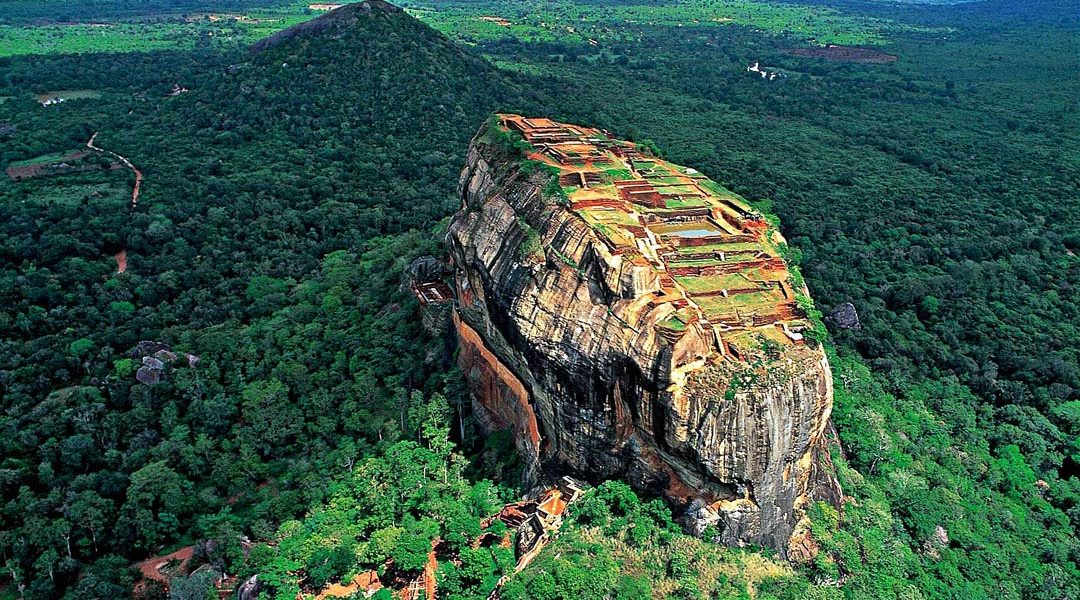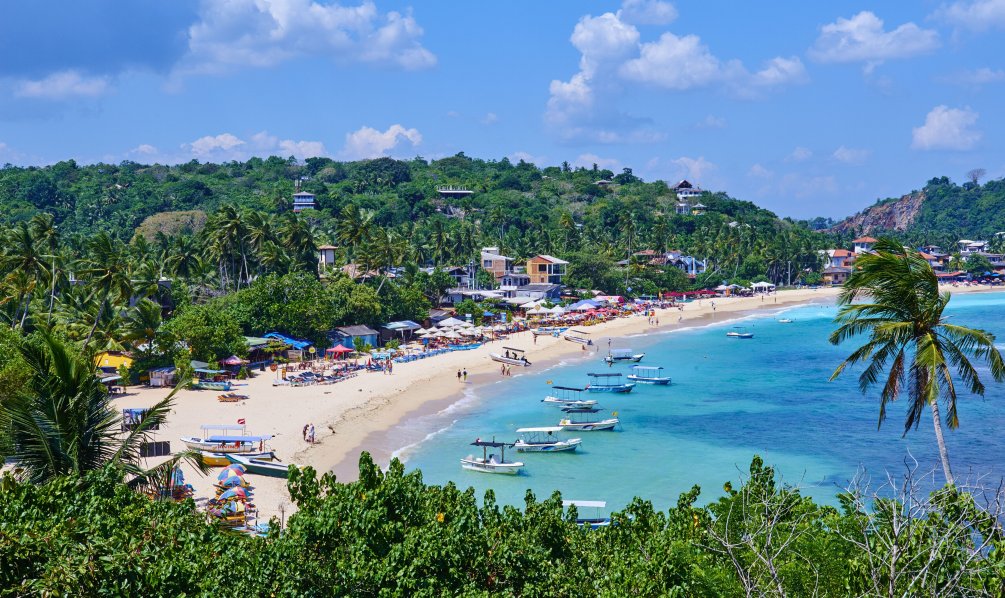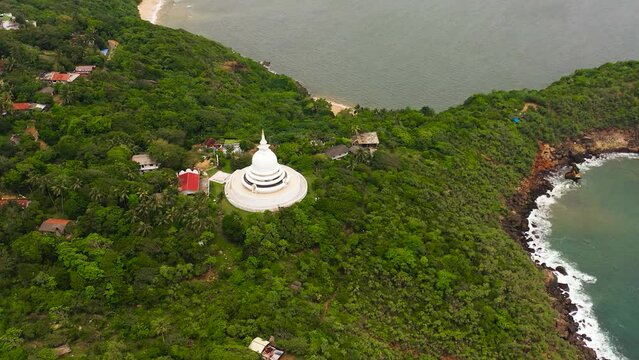Deep in the middle of Sri Lanka, a massive column of rock juts out from the green tropical forest. It reaches 660 feet tall and features frescoes, graffiti, and landscaped gardens. The rock is known as Sigiriya (see-gee-REE-yah) and holds a special place in the island’s cultural history.
It was established as the stronghold of a rogue king over 1,500 years ago, and today the Sigiriya complex stands as one of the earliest preserved examples of ancient urban planning. Ultimately the rock was unable to save its king, but it succeeded in preserving ancient Sinhalese culture.
*Sri Lanka lies just off the southeastern coast of India, a small island about the size of West Virginia (or a tad smaller than Austria or Scotland for European readers).
It is known as “the Pearl of the Indian Ocean,” a tribute to the island’s natural beauty, people – even its shape.
Located in the Matale District of the Central Province (map), the column of rock is somewhat central to the country. Historians believe the region has been inhabited since the 3rd century BCE, making the site one of historical and archaeological significance to Sri Lanka.
The rock is known as Sīhāgiri, meaning “Lion Rock,” a nod to the giant animal carved from stone which greeted visitors at the entrance.
The site was a temporary capital from 477-495 CE when Sri Lanka was under the rule of King Kashyapa.
Kashyapa’s Reign
In 476 CE, King Dhatusena ruled over Sri Lanka. One of his illegitimate sons, Kashyapa, wanted the throne – but knew his full-blood brother Moggallana was next in line. Determined to stake his claim, Kashyapa schemed with the commander of the army to overthrow Dhatusena.
Lore says Kashyapa showed little mercy on his father, walling him up while still alive. But the message was clear, and it sent Moggallana fleeing to Southern India to escape a similar fate. With his dad and brother out of the picture, Kashyapa crowned himself king in 477 CE.
One of his first orders of business was to relocate the royal seat to Sigiriya from the traditional capital of Anuradhapura. It was ambitious and probably somewhat rooted in fear; King Kashyapa had killed the king and driven away the rightful heir to the throne.
In the interest of self-preservation, King Kashyapa immediately began work on his stone fortress.
Its elevated position was an advantage to the defensive stronghold, offering fantastic 360-degree views. Plans to build a city quickly unfolded and after several years, the Sigiriya complex had become a bustling center for the new King.
The igneous rock earned its name from the enormous lion which greeted visitors halfway up the rock on a small plateau. A gateway to the Sigiriya, a lion carved from rock served to both welcome visitors and warn enemies.
Sigiriya was both a palace and a fortress; the overall complex featured five gates and measured just under two miles wide (3 km) by just over a half-mile long (1 km).
The site plan consisted of a citadel, an upper palace on the top of the rock, and lower palaces at ground level.
The King also constructed lavish gardens throughout, and for protection a moat with ramparts surrounded the complex.
The top of the rock was home to a beautiful landscaped gardens and the upper palace, today the oldest surviving palace in Sri Lanka. The upper gardens employed an advanced irrigation system which utilized surface and subsurface hydraulic systems.





